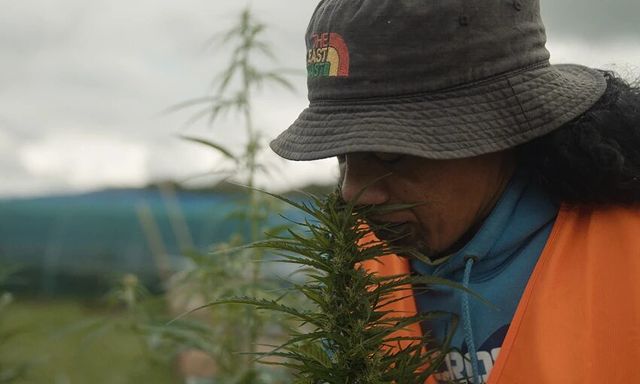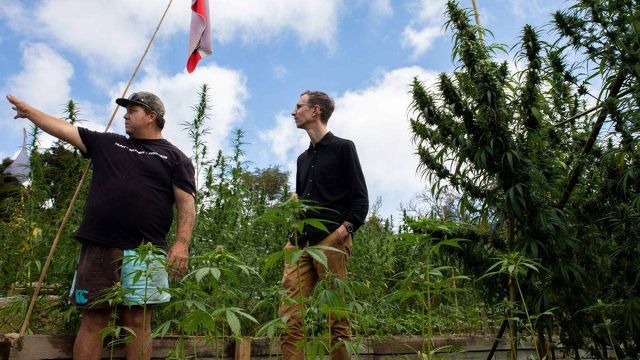Hikurangi Enterprises project Whare Ora has been working to house whānau around Tairāwhiti for two years and is now aiming to get a manufacturing facility set up in Ruatorea.
“We want to build for people of the greater Waiapu Valley,” Hikurangi Enterprises director Panapa Ehau said.
“It’s about building local resiliency and for us that means healthy, affordable and accessible whare.
“EJ (Hikurangi Enterprise’s EJ Ehau, Panapa’s brother) built the (Rua Bioscience) cannabis factory in Ruatorea and knows the challenges and additional costs of building in a remote rural area, so we decided to start here in Tūranga and then replicate it at home and offer the learnings to other remote communities around the country.”
The Whare Ora team have spent the last two years developing a whānau-centric progressive home ownership programme to help whānau rent to buy the whare.
They are taking the first cohort of 15 whānau through the programme.
“We find out what their needs are, what they can afford and then match them up with what suits them,” Panapa Ehau said.
“Most whānau can’t get finance from the bank and find it really hard in the finance space, with the only option being predatory finance companies driven for profit.
“Once we have fine-tuned the financing process over the next 12 months we will open it up to the growing number of Te Tairāwhiti whānau who need this type of support.
“It’s about de-risking the process for whānau. A scaffolding mechanism is being developed
. . . it includes things like financial literacy training and home performance training about how to make your home work well.”
Around 1000 people have expressed interest for the rent-to-own option.
“We know the demand is there and so it’s about being able to do it.”
Hikurangi Enterprises was set up in 2016. It has a “three-pou” focus — housing whānau, feeding whānau and getting them into meaningful mahi.
After the cyclones earlier this year, Mr Ehau and the team thought the bureaucratic process would take ages to get anyone housed, so they made the decision to build 10 whare ora without any plans on where the funds would come from or where the whare would go.
Some of the whare have been sold, others are being held and some have been given to whānau. Whare Ora is working to get funding for those whare.
Hikurangi Enterprises is also working alongside Toitū Tairāwhiti Housing Ltd to supply whare.
“It is all about the ability to hoe tahi — to paddle as one — so that we all are working to house whānau and help whānau,” Mr Ehau said.
The whare are located from Ruatorea to Mahia. Most are in rural areas.
Local building materials have been used to support employment for locals. The timber for the cladding is locally milled macrocarpa and redwood from Ruatorea.
Hikurangi Enterprises has a Peterson Portable Sawmill and a crew of six in Ruatorea who mill the timber, which relates back to one of its pou — getting whānau into meaningful mahi.
“It’s about creating a circular economy model where everything is local and the money stays local,” Mr Ehau said. “That money has more benefits to the community than if we spent it outside of the region.”
They also buy laminated timber made from low value forestry wood from Wood Engineering Technology (WET) in Matawhero.
There are eight different models of whare and these range in size from eight to 125 square metres. The two- and three-bedroom units are designed to accommodate 12 to 14-plus people by adding on the smaller whare.
Whānau are able to upsize or downsize when needed. If a whānau member moves, they can take it with them.
The finance option separates the land and housing, It covers the whare itself so someone can get home ownership without owning the land.
Along with creating a modular housing model, Whare Ora is also designing a transportable off-grid wastewater system that can be customised, depending on the size of the whare.
“Instead of paying 20k for a septic tank that is stuck in the ground and can’t be moved, you would be able to get the right size for the whānau and move it if the whare needs to move,” Mr Ehau said.
Being able to build whare in Tairāwhiti, especially following a cyclone . . . helps strengthen the region’s housing resilience, Mr Ehau said.
“Conversations have started with crews in Wairoa, Mahia and Kaikohe to share the mātauranga (knowledge) with them so they can leverage off our learning for those communities to build for their whānau.
“This is a collaborative model. It’s not a competitive model. It’s about helping everyone raise their local housing resiliency and build-standards, not just one group of people.
“Implementing it in other parts of the country will help their own whānau, which will lead to them finding their own solutions and being able to innovate.
“In a sense, this is about changing the status quo of housing. We are building intergenerational housing assets that last for 100 years.”
From Gisborne Herald











